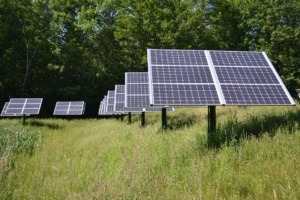Creating an Eco-friendly Home!
Creating an eco-friendly home can range from big efforts like solar panels or going Zero Waste to smaller and simpler changes, like energy saving home appliances recycling and spending less time in the shower.
Read on to find ways to create change around your home!


Install Solar Panels If your home has sufficient sun exposure, installing solar panels is a great way to capture renewable energy while cutting your utility costs. You can choose from grid-tied solar power systems, which tie into your local utility company’s electrical grid, or choose to remain off-grid. Some systems include batteries that allow you to store excess solar power to use as a backup or feed back into the grid. Innovative products, such as Tesla’s new solar-powered shingles or wall-mounted battery packs, are emerging constantly, making your options for home solar power plentiful.
Get a programmable or smart thermostat. Programmable thermostats are a simple way to reduce your energy consumption and save money. Simply program you HVAC system to match your schedule, so it uses less energy while you’re away and picks up again when you’re home. Opt got a smart thermostat that allows you to control the temperature from anywhere via mobile device, and for optimal efficiency, choose one that gives you room-by-room temperature control and automatically adapts to your behaviors and preferences.
Ditch the incandescent bulbs. Let’s face it; incandescent bulbs are a thing of the past. Because they create so much heat, they waste a lot of energy and have a short life span. For energy-efficient, long-lasting lighting, LED (light-emitting diode) and CFLs (compact fluorescent light bulbs) are the way to go. Not only do LEDs and CFLs use 75% to 80 % less energy than incandescent, they also last 3 to 25 times longer, according to the US Department of Energy.
While they cost more up front, they save you money in the long run thanks to their energy efficient and long life span.
Recycling
You may have the basics of curbside recycling down. You put bottles, cans, cardboard, and paper in your bin; you avoid wish cycling; and you generally know what to throw. But there is more you can do! Recycle even more by adding another room to your recycling routine or utilizing drop-off locations for items that can’t be recycled curbside.
Know what to throw by remembering these tips:
Recycle food and drink cartons. Don’t recycle food and drink pouches.
Recycle paper. Don’t recycle paper soiled with food like napkins. Compost it!
Recycle plastic egg cartons. Don’t recycle Styrofoam egg cartons.
Recycle food and beverage bottles and jars. Don’t recycle drinking glasses.
The Winning Combination
Get the most out of your recycling program and make sure to keep wish cycling items out of your curbside bin. If your recycling cart is full by the time your pick-up day comes around, but your garbage can still has room in it, you should be proud of yourself. By ensuring that everything in your cart is recyclable and safe for facilities, you avoid the problems created by wish cycling like wasting time, money and creating more waste. Don’t forget that “not accepted in curbside bins” doesn’t mean “not recyclable.” Use drop-off locations for items that can’t be recycled curbside to bring your habits to the next level.

